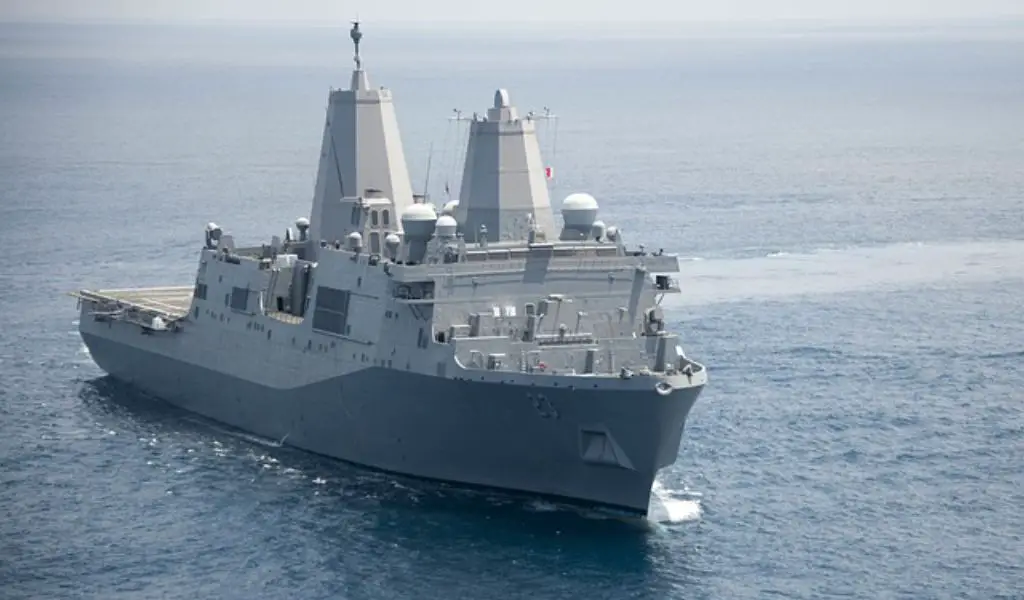Navantia Sistemas and Lockheed Martin have successfully completed the first phase of integration of Navantia Sistemas’ SCOMBA combat management system and Lockheed Martin’s IAFCL (International AEGIS Fire Control Loop) system, systems that will be installed on future F-class frigates. 110 Bonifaz that will be incorporated into the Navy to replace those of the F-80 class.
The installation and integration tests were carried out during the month of January 2023 in the ASIC test environment (AEGIS SCOMBA Integration Center), located at the Lockheed Martin facilities in Moorestown, New Jersey. An international team of engineers from Navantia Sistemas and Lockheed Martin have worked on these activities with the support of the DGAM, the Navy and the Navy of the United States. The successful execution of these tests is the result of the notable effort made by all parties and represents an important advance in the integration of both systems.
The combat system of the F-110 frigates is a novel concept that has not been addressed before on AEGIS platforms. Among other aspects, the design establishes that SCOMBA is the administrator of all the contacts (traces) of the combat system. Regarding this capacity, in this first phase of integration, the SCOMBA and IAFCL systems met the objectives of connecting, exchanging and presenting information on the operation consoles to establish the tactical situation, including the status of the systems and the data of combat system tracking.
The Aegis Combat System (ACS) is an integrated naval weapons system developed in the United States by RCA Corporation’s Surface Radar and Missile Division and now produced by Lockheed Martin. The system uses powerful radar and computers to track and guide missiles to destroy enemy targets.
Initially created for the United States Navy, the Aegis is now also used by the Japan Maritime Self-Defense Force, the Spanish Navy, the Royal Norwegian Navy, and the Republic of Korea Navy, navies in which they serve around than 100 ships equipped with this system.
The Aegis system, already incorporated in the F-100 frigates, has the capacity to detect and track more than 90 moving targets and direct anti-aircraft and surface missiles.
As for the SCOMBA program, the Navy Ship Combat System, it is the unified combat system with which most Spanish Navy ships have been equipped since 2010.
It was developed from a technology transfer of parts of the source code and specifications of the C&D (command and decision) and ADS (aegis display system) programs of the American Aegis 1 Combat System to unify future combat systems. of the Navy through a common nucleus, which shared code, specifications, consoles, equipment, training, and infrastructures of national manufacture.
Joe DePietro, Lockheed Martin’s vice president of Multi-Domain Combat Solutions, has indicated that this integration is the result of 25 years of collaboration with Navantia and the Navy and has reiterated the commitment to the Spanish industry and commercial collaboration in export opportunities. of the F-110 and its systems.
Navantia’s Director of Systems and Services, Donato Martínez, has also highlighted that the close collaboration between both companies has achieved a milestone that places Navantia at the forefront of military shipbuilding. “International collaboration and technology are the foundations of a robust, agile and flexible defense, where the industry plays a crucial role”, he concluded.
Additionally, in 2023 the thirteenth Technical Exchange Meeting (TIM) between Navantia Sistemas and Lockheed Martin was held in Moorestown, New Jersey, where important decisions were made to refine the integration details between the SCOMBA and IAFCL systems, both in their interface and their development plans. This meeting, supported by the DGAM, Navy and US Navy, represents a great achievement in defining the anti-air warfare capabilities of the F-110 combat system.
All these steps will lead to the first export, delivery and installation of the IAFCL in the LBTS (Land Based Test Site) test environment, located at the Navantia Sistemas facilities in San Fernando, in May 2024.
With this first global ASIC milestone successfully completed, the integration work continues and by 2024, the SPY-7 solid-state radar will also be available in the ASIC test environment for integration and evaluation. The SPY-7 is the world’s most advanced solid-state radar, providing protection against airborne and ballistic missile threats. The SPY-7 radar will also be later installed in Spain at the CIST (Centro de Integración de Sistemas Terrestres), located at the Rota Naval Base, prior to its installation on the F-110 frigates.
Navantia and Lockheed Martin, together with the DGAM, the Navy and the US Navy, continue their close collaboration in the integration of the AEGIS system in military ships, now with the F-110 frigate, which places Navantia in the Technological cutting edge of military ships shipbuilding.
Subscribe to our latest newsletter
To read our exclusive content, sign up now. $5/month, $50/year
Categories: Technology
Source: vtt.edu.vn
